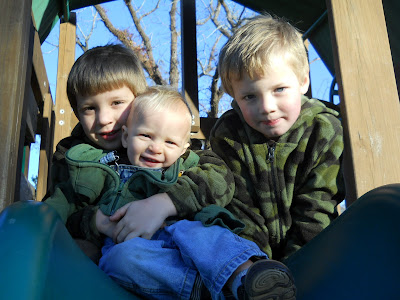Of all the skills necessary to learn along the path to self-sustainability, I thought that learning how to bake your own bread was one of the most critical ones. Humans had been making bread in some shape or form since early on in our existence, so why in the world should I pay $3.00 in the grocery store for a spongy loaf filled with preservatives? Of course, as with all things, bread making is easier said than done until you learn the method that works for you. Over the years I had tried unsuccessfully to make bread (without the assistance of a bread machine) and ended up with disaster after disaster. The yeast didn't activate, the dough didn't rise,the dough rose too much, fell out of the pan and oozed all over the oven . . . After removing yet another rock hard, flat, and extremely yeasty-smelling loaf out of the oven, this basic life skill was becoming a sore point with me. What was it that every frontierswoman knew that I, for the life of me, could not figure out? About to throw in the towel and resign my family to a life of over-priced, under-flavored store-bought bread, I stumbled across yet another bread recipe on AllRecipes.com for Simple Whole Wheat Bread. The only reason that motivated me to try again were the especially tempting photos attached of golden loaves shiny with butter, the scent of warm bread almost rising from my laptop. That, and the comments of about 1,000 people who had successfully made bread with the recipe. Come on, a thousand people had made bread with this recipe! If I could not pull this one off, then it was time to accept my shortcomings and deal with my grocery store-dependency.
On a whim, when loading up with supplies at the store, I grabbed a bag of Gold Medal Better for Bread Flour, and a jar of Fleischmann's Bread Machine Yeast. Back at home, I followed the recipe to the letter, and to my family's amazement, produced three beautiful, crusty, perfect loaves of bread from my oven. I could have wept with joy(and I actually might have a little, though I hid it so no one would make fun of me crying over bread for heaven's sake). I know that there are those of you out there like me, who have attempted something that you feel is so basic over and over again, just to meet with terrible results time and again! The part of me that is the over-achiever could not handle this total inability to transform a handful of ingredients into something edible for my family. So, for those kindred souls, print out the recipe below and never lose it!
Simple Whole Wheat Bread
Ingredients
Directions
 You can also go to allrecipes.com for this recipe at http://allrecipes.com/recipe/simple-whole-wheat-bread/detail.aspx and tell Ms. Nita Crabb that she is a bread goddess and thank you, thank you, thank you! I will say that the Fleischmann's yeast and the Gold Medal Bread Flour are now an indispensable part of my bread routine and everything that I have made with those two products together has risen perfectly, so if you are still meeting with disaster, try these products! It also helps to have volunteers to help knead the bread. . .
You can also go to allrecipes.com for this recipe at http://allrecipes.com/recipe/simple-whole-wheat-bread/detail.aspx and tell Ms. Nita Crabb that she is a bread goddess and thank you, thank you, thank you! I will say that the Fleischmann's yeast and the Gold Medal Bread Flour are now an indispensable part of my bread routine and everything that I have made with those two products together has risen perfectly, so if you are still meeting with disaster, try these products! It also helps to have volunteers to help knead the bread. . .
Because of this small success, I have made the commitment to end my bread-dependence at the grocery store. It has been a few months so far, and I have yet to buy a loaf. The boys love it and say "Momma's bread is much better than store bread!" through mouths crammed with warm, fluffy goodness. Each recipe makes 3 loaves, so I put the other two into the refrigerator to keep fresh until we need them. I'm baking bread every 2-4 days, depending on how quickly it disappears!
There are three heavenly loaves just out of the oven! I know that some people might be wondering why I am driven to do this. Believe me, I am not a person with idle time on my hands that needs to be filled! Yes, it would be absolutely easier to go buy a loaf of bread at the store. Making your own bread saves money, as a bag of flour sells for about $3.30, and I can produce at least 9 loaves from that bag. However, economics alone is not the driving factor that makes me do this. My boys were eating their lunch the other day, which was the tried-and-true kid staple of peanut butter and jelly sandwiches. It hit me that everything they were eating I had made - the peanut butter, the strawberry preserves, and yes, the bread. I knew exactly what was in the food they were eating. The only way it could have possibly been better is if I had grown my own wheat and milled my own flour (something I am reading about, but have yet to take on!) I can't begin to describe the feeling of pride that came from that simple realization. These boys are the reason why I do everything that I do - for their health, their safety, and their future. There is no greater purpose that I can imagine.














